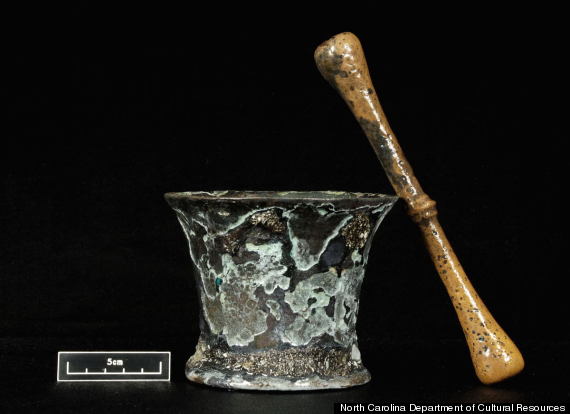
Ahoy! Archaeologists excavating pirate Blackbeard's sunken ship, named Queen Anne's Revenge, recently unearthed from the wreckage various medical devices--and some of them look pretty darn terrifying.
Among the grisly finds were a urethral syringe that would have been used to treat syphilis, two pumps, and a porringer that would have been used in bloodletting, Live Science reported.
"We just have to understand that these people were suffering," Dr. Linda Carnes-McNaughton, an archaeologist with the U.S. Department of Defense who volunteered on the excavation, told CNN. "They were seeking relief for any kind of ailment, and certainly if there was warfare on the water, there were wounds among other ailments that needed treatment. It wasn't always a formally trained person in desperate times. That's probably more common than we know."
(Story continues below photos.)
A mortar and pestle that was likely used to grind ingredients to make medicine.

Supplies used to measure medicine.
Blackbeard lost his flagship when it ran aground off the coast of North Carolina in 1718. The ship was hidden by water and sand for more than 270 years until it was rediscovered in 1996. Now, the shipwreck is being closely studied as part of the Queen Anne's Revenge project of the North Carolina Department of Cultural Resources.
Thanks to the medical artifacts found aboard the flagship, archaeologists are learning more about how Blackbeard's crew treated not only small wounds and ailments, but also chronic illnesses.
"Because his passion for piracy, I think he cared very much about keeping it going, and to keep it going, he had to have a healthy, functioning crew," Carnes-McNaughton told The Washington Post.
We Don't Work For Billionaires. We Work For You.
Already contributed? Log in to hide these messages.
She described the new findings at the Society for Historical Archaeology’s annual meeting on Jan. 8, 2015.
